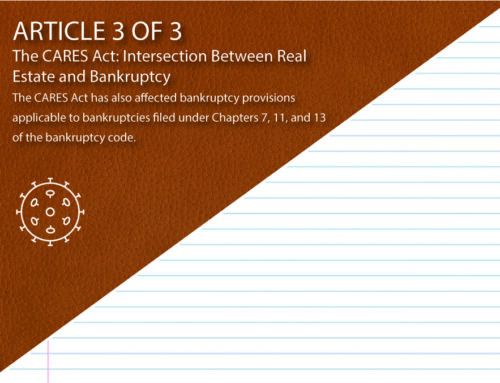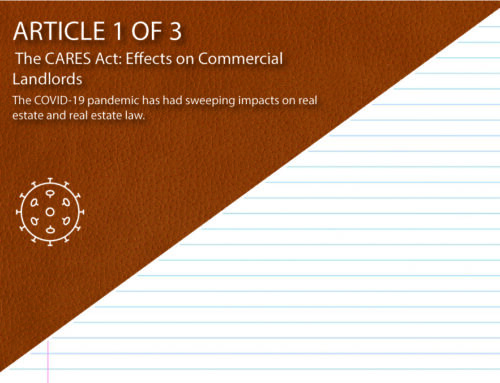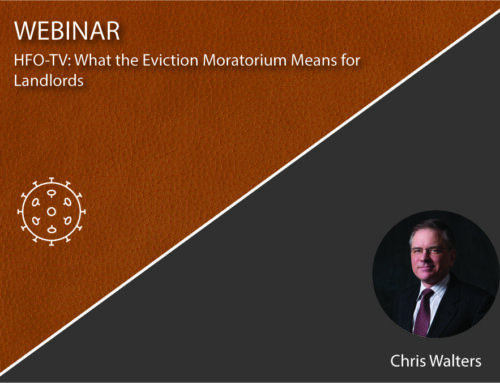This is the second article in a 3-part series and addresses effects of the Coronavirus Aid, Relief and Economic Security Act (the CARES Act) on residential and multifamily borrowers and tenants.
Since mid-March, the number of unemployed individuals in the United States has swelled to over 40 million. This means that 1 in 4 Americans is without a job. Some economists believe the country is in a recession while others are expecting a rebound in the second half of the year as restrictions are lifted. In the meantime, though, the CARES Act addresses unemployment through fiscal incentives, an eviction moratorium, and loan forbearance.
Eviction Moratorium
In addition to moratoria imposed by many states and municipalities, Section 4024 of the CARES Act implemented a 120-day nationwide moratorium on evictions. This moratorium applies to properties insured, guaranteed, supplemented, protected, or assisted in any way by the U.S. Department of Housing and Urban Development (HUD), Fannie Mae, Freddie Mac, the rural housing voucher program, or the Violence Against Women Act of 1994. This amounts to over 27,000 properties nationwide. Landlords of covered properties are prohibited from evicting tenants for 120 days from the date that the CARES Act was enacted, or until July 25, 2020.
Forbearances
Section 4023 of the the CARES Act provides forbearances on multifamily (5+ families) residential properties with federally backed mortgage loans of up to 90 days (a 30 day forbearance and two 30 day extensions) if the borrower experiences financial hardship due directly or indirectly to the pandemic. To qualify for forbearance, the borrower must be current on their loan payments as of February 1, 2020 and must request forbearance before termination of the national emergency or by December 31, 2020, whichever is earlier. Loan servicers must grant a forbearance without any documentation from the borrower other than a statement of financial hardship. If forbearance is granted, the landlord borrower cannot evict any tenants or charge late fees or penalties during the period of forbearance. There is no restriction on the use of security deposits.
Section 4022 of the CARES Act provides forbearance options for 1-4 family properties with federally backed mortgage loans of up to 360 days (180 days with a 180 day extension) if the borrower experiences financial hardship due directly or indirectly to the pandemic. As with forbearances on larger multifamily properties, the borrower must be current on their loan, request forbearance before or earlier than the termination of the national emergency or December 31, 2020, and the loan servicers must grant the forbearance without documentation other than a statement of financial hardship.
Considerations for Landlords
Landlords experiencing significant revenue decline due to non-payment of rent may want to consider:
- Forbearance options,
- Loan modifications, or
- Extensions
While forbearance relief is available, lenders may be disinclined to underwrite loan modifications and extensions for loan in forbearance or borrowers that have availed themselves of forbearance relief. Landlords that are aware of relief programs available to tenants can provide such information and encourage tenents to apply for those programs, whether federal, state, or local.
This article is for informational purposes only and is not intended as legal advice. This is a rapidly evolving area of law and the article is only current as of its date of publication. Please reach out to Ball Janik, LLP for the most updated information, state-specific information, and legal advice. Please also visit our COVID-19 webpage for resources by industry.






